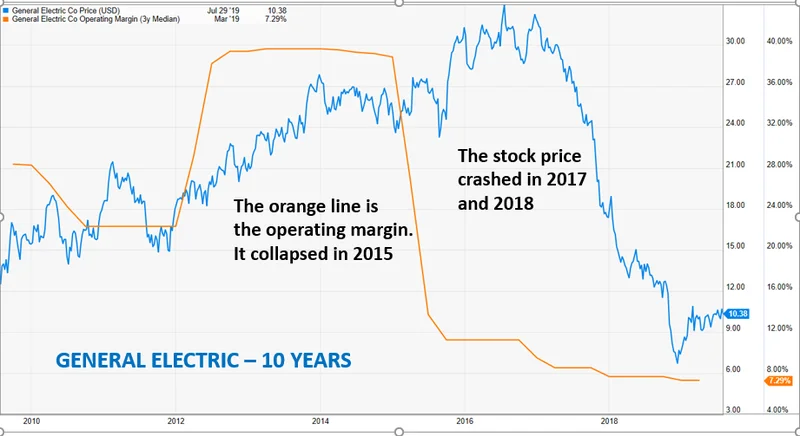Article Directory
The pre-market hum on Wall Street is a particular kind of quiet, an anticipatory silence before the data storm hits. When GE Aerospace’s third-quarter numbers crossed the wire, that silence was broken by the predictable, almost reflexive, flicker of green on trading screens. The stock ticked up over 2.5%, a modest but firm nod of approval.
On the surface, the market’s reaction was a simple calculation. Adjusted revenue hit $11.3 billion, a 26% year-over-year increase. Adjusted earnings per share came in at $1.66, handily beating the consensus estimate of $1.47. CEO Larry Culp delivered the requisite triumphant quote, celebrating "an exceptional quarter." It’s a familiar script: a legacy industrial giant posts strong numbers, the stock gets a small bump, and analysts update their models before moving on to the next report.
But to stop there is to miss the entire story. The market’s initial, placid reaction was focused on the past—on a quarter that was already in the books. The truly significant data point wasn’t about the last 90 days. It was about the signal GE just sent about the next 90 and beyond. And that signal wasn’t just positive; it was a fundamental recalibration of expectations.
The Engine Behind the Numbers
Before we get to the forecast, it’s critical to understand the mechanics of the beat. This wasn't a case of clever accounting or a one-time asset sale. The growth was organic, concentrated, and powerful, emanating from the company’s core: the commercial engines and services division.
This is the part of GE that keeps the world’s planes in the air. Orders in this segment were up 32%, and revenue followed suit with a 28% jump. That’s a staggering figure for a business of this scale. We’re not talking about a startup doubling its user base from a low number; we’re talking about a foundational piece of the global aviation infrastructure firing on all cylinders. The demand for both new engines and, more critically, the high-margin aftermarket services that keep them running, is clearly robust.
Culp’s statement about "more than 130% free cash flow conversion" is the kind of metric that gets an analyst’s attention. It points to a business that isn’t just growing its top line but is efficiently converting that revenue into actual cash (the lifeblood of any company, especially one with GE's history). This isn't just a story about post-pandemic travel recovery anymore. The numbers suggest something more durable is at play.

But even these impressive results are, in my view, secondary. They are the supporting evidence for the main event, which was buried a little further down in the press release.
A Revision That Screams Confidence
Corporate guidance is a carefully managed art form. Companies, particularly mature ones like GE, prefer to under-promise and over-deliver. They issue conservative forecasts and then "beat" them, creating a steady rhythm of positive news. That’s what makes GE’s Q3 update so remarkable. It wasn't a gentle nudge upwards; it was a forceful shove.
The company didn’t just raise its full-year EPS forecast; it ripped up the old one. The previous range was $5.60-$5.80 per share. The new range is $6.00-$6.20. That’s a significant leap so late in the fiscal year. More telling, however, was the revision for the commercial engines and services segment. The prior guidance called for revenue growth in the "high teens." The new forecast is for growth in the "mid-20s."
To put that in perspective, this is like a ship’s captain, three-quarters of the way through a voyage, suddenly announcing they’ve discovered a powerful, uncharted current. They aren't just correcting course by a few degrees; they are fundamentally upgrading the vessel's arrival time, implying a massive change in the underlying conditions they are observing. This revision suggests that the internal data GE’s management is seeing for the fourth quarter is not just better than expected, but an outlier compared to their own models from just a few months ago.
And this is the part of the report that I find genuinely puzzling. What, precisely, are they seeing that the rest of the market missed so completely? Is this simply a backlog of MRO (maintenance, repair, and overhaul) work from the pandemic finally uncorking with more force than anticipated? Or is there a structural shift in airline fleet management or pricing power that GE is exploiting? The press release doesn’t elaborate. Details on the specific drivers of such a dramatic forecast change remain frustratingly scarce, but the implication is clear. Management's confidence in near-term performance is exceptionally high.
This move forces us to ask a different set of questions. It's no longer about whether GE can meet its targets, but rather what the true ceiling for this business cycle is. How much of this is sustainable demand versus a temporary surge? And what does this level of operational performance signal about the company's ability to execute now that it stands alone as a pure-play aerospace firm?
The Real Story Isn't the Beat, It's the Signal
Let’s be clear. The market’s 2.5% pop, which led to headlines like GE’s stock surges toward a record after a big profit beat and raised outlook, was the wrong reaction, or at least an incomplete one. It was a reaction to the headline EPS beat, a lagging indicator. The true alpha, the actionable insight, lies in the magnitude of the guidance revision. A company of GE's size and maturity does not make a forecast change of this scale lightly. It is a data-backed declaration of confidence, and it suggests that the operational momentum and market tailwinds are significantly stronger than even optimistic observers believed. The quarter was excellent, but the signal about the future was profound. That’s the story the numbers are really telling.
